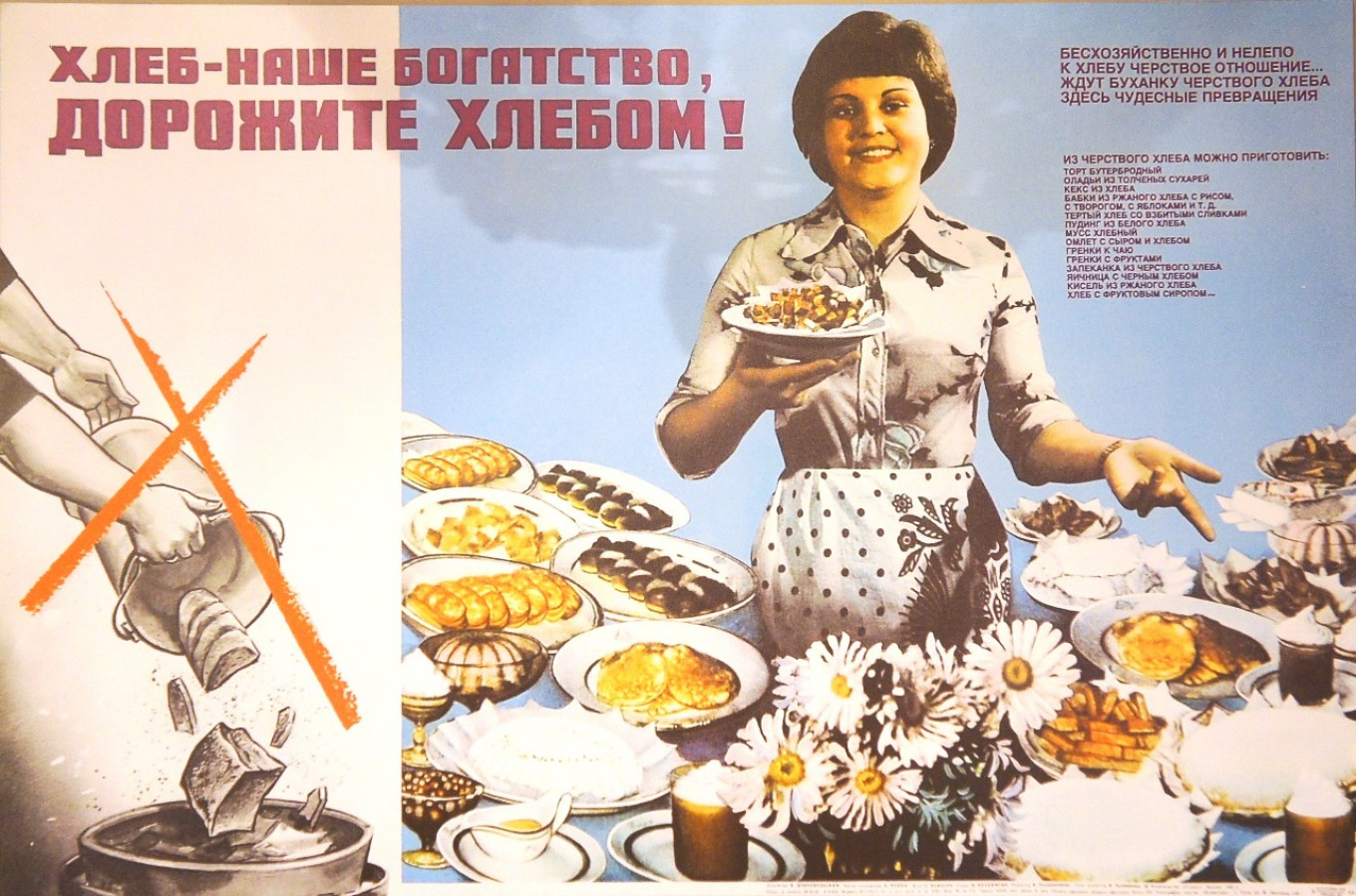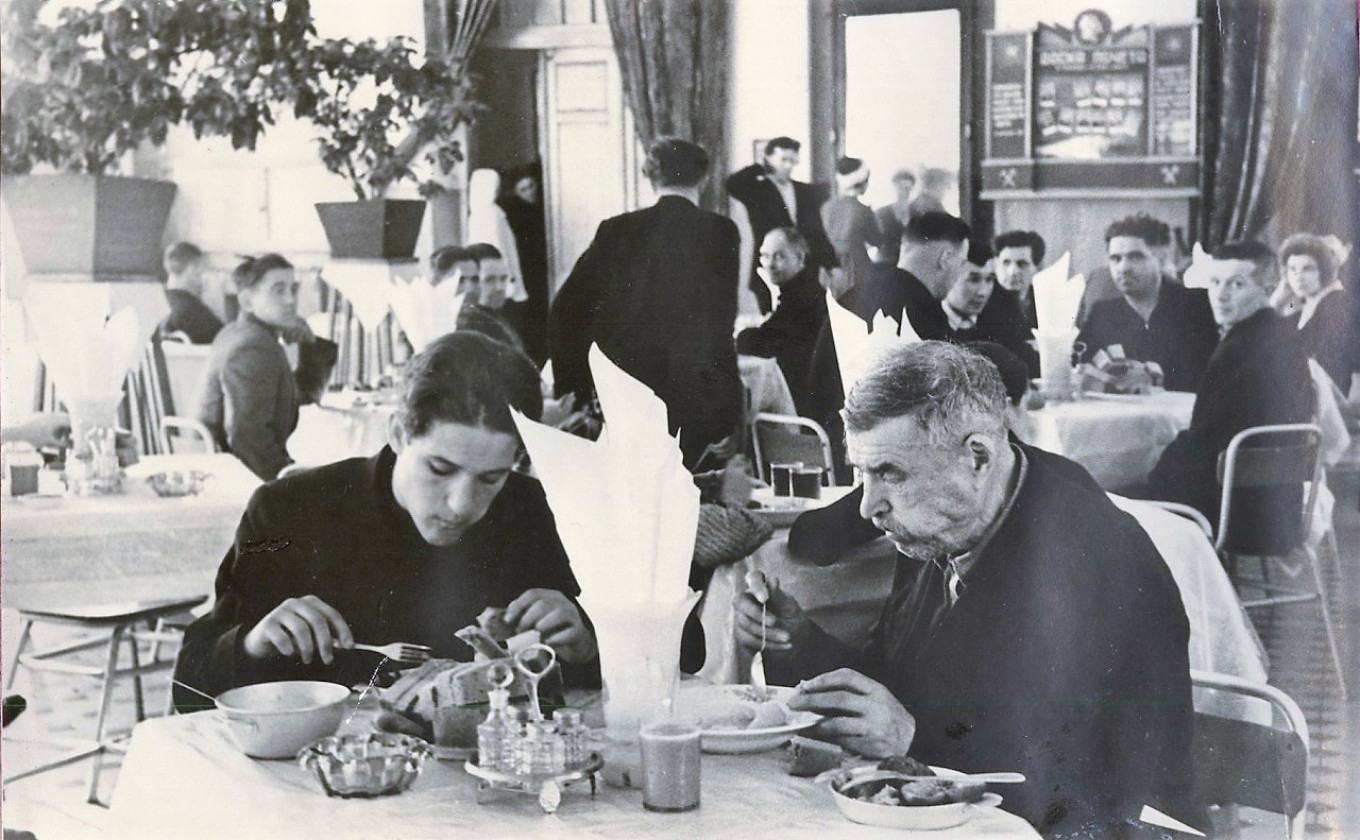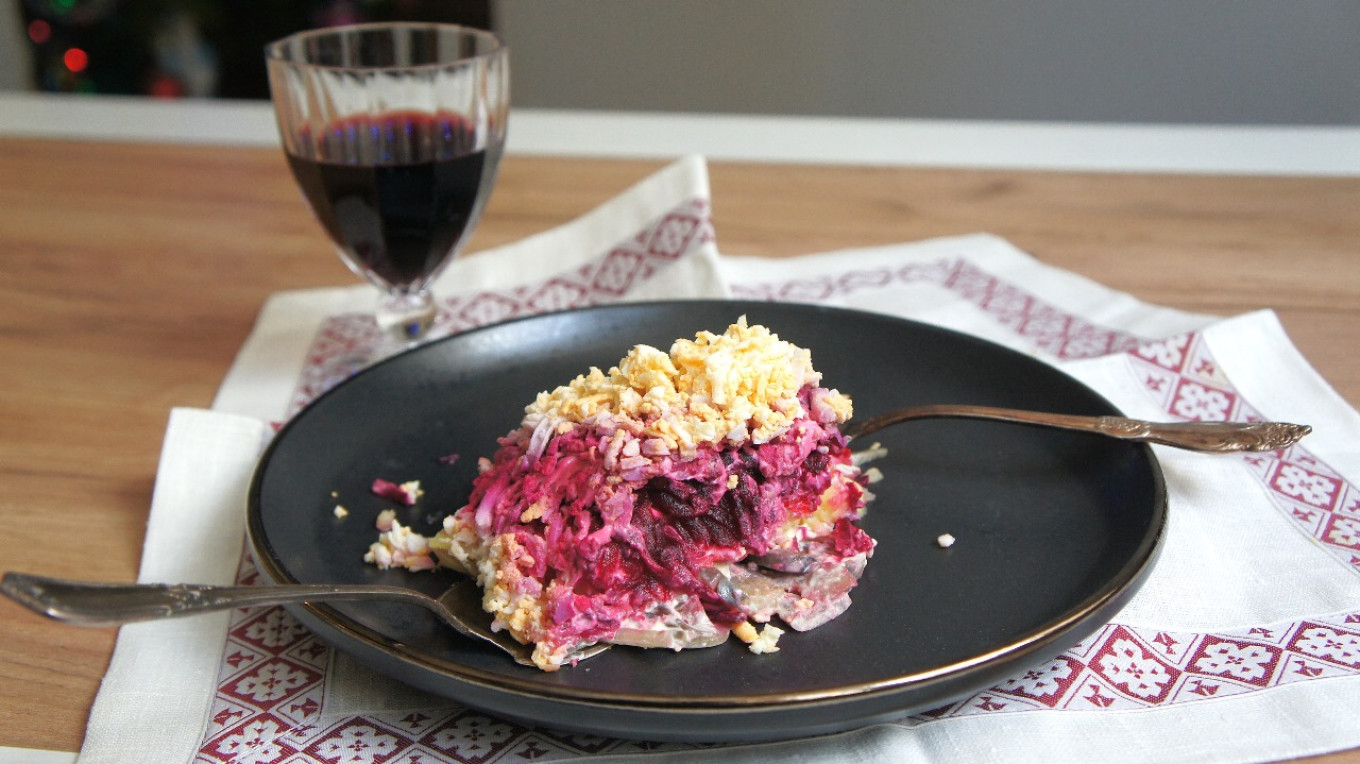A Guide to Soviet Table Habits and a Recipe for Furry Fish

Today it’s all the rage to wax nostalgic for the late USSR. But history is flexible. Today it’s one thing; tomorrow it will be another — people will write whatever is needed.
Perhaps only our personal memories will soon become the best and most objective source of information about the past.
Soviet culinary habits are still a part of many people’s subconscious. Many habits became widespread in the USSR but actually originated in an earlier era. For example: eating everything with bread. For example, the grandfather of one of the authors of this article ate macaroni with bread. And he even ate bread with watermelon. We’d hazard a guess that many people who lived in the Soviet era share this curious habit.
Today this tradition is dying out, but in general, eating a lot of bread at the table is a long-standing Russian habit. At the beginning of the 20th century, an ordinary worker ate up to a kilogram of bread a day. When food was hard to come by in the Soviet period, bread was a way to eat quickly and cheaply — especially since it was always subsidized by the state and was the state’s “gift” to the people. It had to be cherished. In cafeterias and work canteens posters admonished diners to “Take bread for dinner in moderation. Bread is a treasure — don’t waste it!” Today’s nutritionists may be horrified by all this, but back then we had our own habits.

Wikimedia Commons
It’s an interesting exercise to try to get down on paper what’s been in our heads since the Soviet era. For example: What’s the first thing you did when you entered a cafeteria? You’d take a spoon and fork and wipe them with a napkin. Everyone in the older generation does this automatically. In the USSR machine-washed dishes were a game of chance. You might pick up a clean fork, or you might grab one that was covered in years of baked-on grease. Wiping cutlery was just a reflex.
All right, when you sit down with a tray of food, where do you start? Salad: cabbage, carrots, tomatoes, cucumbers. But salad was not always the first course of the meal. If we look at “The Book of Tasty and Healthy Food” of 1939, salad is only a garnish to a hot dish. In the Soviet era a meal began — as it had for hundreds of years before — with soup. It wasn’t until the 1950s and 60s that salad moved to the top spot. That was when eateries began to serve served sliced vegetables on a separate plate.

Wikimedia Commons
Another universal Soviet reflex at the table was to salt everything before even tasting it. The first thing a person did in a restaurant or at the kitchen table was to reach for the salt. It was automatic and everyone did it. Today salt is “demonized.” Along with sugar, it is the enemy of a healthy person. But in the Soviet era, salt was one of the few ways to flavor table food.
But let’s continue with the meal. What’s a meal without a drink and a food chaser? On every Soviet holiday table there was always a platter of sliced cheese, sausage and cold cuts. Nowhere in the world have we seen such beautifully arranged holiday platters as in the Soviet era. This is still common in many families in Russia today. This isn’t good or bad: it’s just a practice of once-Soviet people that is still common today. Why was it done? Simple: to distribute the scarce supply of lunch meats to everyone around the table.

Wikimedia Commons
Another Soviet peculiarity was the veneration of sausage and cold cuts. These sticks of processed and smoked meats were indeed almost sacred objects — especially smoked sausage and salamis. It was easy to store, so it could be put aside for a holiday.
The saying that “the best fish is sausage” came out of those difficult years. Why? Because after a host or hostess cleaned the fish and cut of its head and tail, the price was almost the same — but a fish involved a lot of work! With sausages and cold cuts, all you had to do was slice them and put them on the table.
It is surprising — or rather, it is no longer surprising — that we see a similar process today. The Russian Statistical Service reported not long ago that in recent years fish and cheese have been replaced by cold cuts on Russian tables. Why would this happen? It doesn’t take long to figure it out.

Wikimedia Commons
Another Soviet culinary feature is the use of canned goods. No other developed country in the world eats as much canned food as we do. Spam, sprats, salmon in cans (good for soup) — all these are indispensable attributes of the Soviet table. This led to mixed salads made with them. And with a dacha on 600 square meters of land, a host and hostess had endless supplies of food they put up themselves. Pickled cucumbers, tomatoes, squash caviar and jams were stored on balconies and in back rooms. Sometimes it was stored for years before being simply tossed away. But it was the pride of the hostess: healthy, ecologically pure, grown with her own hands!
Let’s be honest: Many of the habits and features of the Soviet kitchen were due to poverty and everyday hardships. But this is our history, our life. Which, it would seem, should teach us something.
Probably the most memorable salad from Soviet times is the late-1960s creation “herring under a fur coat.” Let’s not forget that the main role of salads in Russian cuisine is an appetizer for the first drink. This “fur coat” was perfectly suited to that task.
Herring Under a Fur Coat
For 6 servings
Ingredients
- 500 g (generous 1 lb) carrots
- 500 g (generous 1 lb) beets
- 500 g (generous 1 lb) potatoes
- 200 g (7 oz) mayonnaise
- 200 g (7 oz) onions
- 500 g (generous 1 lb) salted herring fillet
- 2 hard-boiled eggs
- green onions, herbs for garnish
- salt to taste
- ground black pepper to taste

Instructions
- Prepare the vegetables: Wash carrots, beets and potatoes thoroughly with a brush.
- Preheat oven to 190°C / 375°F.
- Wrap the raw vegetables individually in foil. Place them on a baking tray and bake for 50 minutes. Unwrap the foil and allow the vegetables to cool completely.
- Peel and dice the vegetables or grate them coarsely. Put each diced/grated vegetable into a separate bowl. Add mayonnaise, salt and pepper to taste.
- Peel the onion and chop it very finely. Place it in a colander and cover it with boiling water to purge the bitterness. Another way is to spray the sliced onions with lemon juice, leave for 5 minutes, then place on a paper towel to dry.
- Cut the herring fillets first into long strips, then into small cubes, removing any small bones.
- Place the onion, herring, potatoes, carrots and beets in layers in a transparent salad bowl or serving bowls. You can repeat the layers if you have enough.
- Hold a fine grater over the top layer of beets and grate hard-boiled eggs. Cover the top of the salad bowl with plastic wrap and put it in the refrigerator for 2 hours.
- Garnish the cooled “herring under a fur coat” with chopped green onions or herbs. Serve immediately. Remember that salads made with mayonnaise should not be stored more than 8 hours, even in the refrigerator.
Tips:
For a more festive serving of the classic herring under a fur coat, you can use culinary rings set on plates. For the salad to retain its shape best, mix each layer with mayonnaise separately, as indicated in our recipe. Fill the rings with the layers, and then, just before serving, carefully remove the rings.
To make a more delicate sauce for the salad, make a small change in the classic recipe. Add sour cream to the mayonnaise (3:1 proportion of mayonnaise to sour cream) and a teaspoon of lemon juice.

A Message from The Moscow Times:
Dear readers,
We are facing unprecedented challenges. Russia’s Prosecutor General’s Office has designated The Moscow Times as an “undesirable” organization, criminalizing our work and putting our staff at risk of prosecution. This follows our earlier unjust labeling as a “foreign agent.”
These actions are direct attempts to silence independent journalism in Russia. The authorities claim our work “discredits the decisions of the Russian leadership.” We see things differently: we strive to provide accurate, unbiased reporting on Russia.
We, the journalists of The Moscow Times, refuse to be silenced. But to continue our work, we need your help.
Your support, no matter how small, makes a world of difference. If you can, please support us monthly starting from just $2. It’s quick to set up, and every contribution makes a significant impact.
By supporting The Moscow Times, you’re defending open, independent journalism in the face of repression. Thank you for standing with us.
Continue
Not ready to support today?
Remind me later.
×
Remind me next month
Thank you! Your reminder is set.





